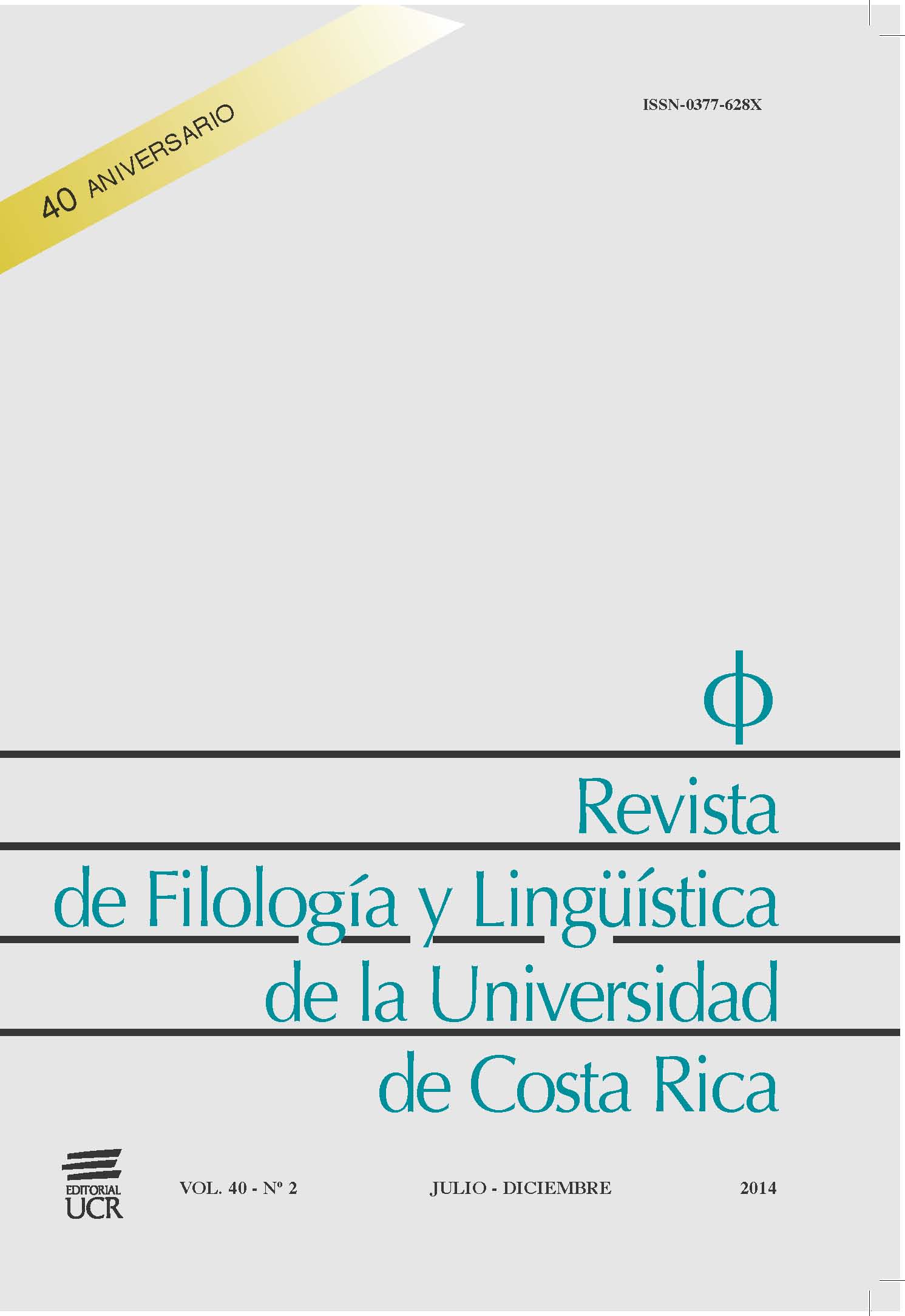Abstract
In this article an iconographic analysis of frontispieces of the most important costumbrist collections of social types from Europe and Latin America is carried out. With a metaphoric intention, optical entertainment devices (magic lantern and tutilimundi) from the XIX century visual culture, along with objects related to their display (such as the magic lantern canvass where images are projected) are considered. ‘El diablo cojuelo’ (‘The crippled devil’), a satirical symbol, and the audience are also incorporated in this early frontispiece modes. This iconography used in costumbrist collections, as well as optical shows, offer to the audience a gallery of representative national social types. Moreover, in other frontispieces the analogy of costumbrist collections has also been identified with the significant practices of painting, drawing, and caricature. Finally, advertisement posters observed by an audience also represent another typical iconographic situation of costumbrist frontispieces. Resorting to analogies, the publishing projects of social types collections use for its representation verbal as well as visual practices.
References
Aguirre, M.B. (1841). Los niños pintados por ellos mismos. Obra arreglada al español por don Manuel Benito Aguirre. Madrid: Ignacio Boix.
Boix, I. (Ed.). (1843). Los españoles pintados por sí mismos. (Vol 1-2). Madrid: Autor.
Cuvardic-García, D. (2012). “Los espectáculos ópticos de la cultura popular salvadoreña: el tutilimundi en el artículo costumbrista El panorama, de Arturo Ambrogi”. Revista Káñina. 36 (1), 45-54.
Flores, A. (1846). Doce españoles de brocha gorda, que no pudiéndose pintar a sí mismos, me han encargado a mí, Antonio Flores, sus retratos. Novela de costumbres contemporáneas. Madrid: Imprenta de don Julián Saavedra y Compañía.
Gavarni, P. et ál. (1840). Les français peints par eux-mêmes. Encyclopédie morales du dixneuvième siècle. (Vol. I-IV). Paris: L. Curmier Éditeur.
Genette, G. (2001). Umbrales. México: Fondo de Cultura Económica.
Janin, J. et ál. (1831-1834). Paris, ou Le Livre des Cent-et-un. (Vol. I-XV). Paris: Ladvocat.
Jerrold, D. et ál. (1840). Heads of the people; or Portraits of the English. With Original Essays by Distinguished Writers. [Ilustrado por Kenny Meadows]. London: Tyas.
Jerrold, D. et ál. (1864). Heads of the people; or Portraits of the English. With Original Essays by Distinguished Writers. [Ilustrado por Kenny Meadows]. Henry G. Bohn.
Lauster, Martina. (2007). Sketches of the Nineteenth Century. European Journalism and its Physiologies, 1830-50. Houndmills: Palgrave MacMillan.
Le Men, S. et Abélès, L. (Eds.). (1993). Les Français peints par eux-mêmes. Panorama social du XIXe siècle, catalogue de l’exposition au Musée d’Orsay du 23 mars au 13 juin 1993, Avec la participation de Nathalie Preiss-Basset, Paris, Réunion des musées nationaux. (4-46).
Mannoni, L. y Pesenti-Campagnoni, D. (2009). Lanterne magique et film peint. 400 ans de cinéma. Paris: Éditions de La Martinière.
Millán, J.A. (Ed.) (1852). Los cubanos pintados por sí mismos: colección de tipos cubanos. [Ilustrado por Lanzaluce]. [Grabados de José Robles). La Habana, Cuba: Imprenta y Papelería de Barcina.
Panofski, E. (1983). Iconografía e iconología. En: El significado en las artes visuales. (45-58). Madrid: Alianza Editorial.
Peñas-Ruiz, A. (2012). Aproximación a la literatura panorámica española (1830-1850). Interférences littéraires/Literaire interferenties. (8), 77-108.
Pérez-Salas, M.E. (2005). Costumbrismo y litografía en México: un nuevo modo de ver. México: Universidad Nacional Autónoma de México. Instituto de Investigaciones Estéticas.
Saillet, A. de. (1841). Les enfants peints par eux-mêmes. Paris: Desesserts éditeur.
Sand, G. et ál. (1845-1846). Le Diable à Paris. Paris et les Parisiens. Moeurs et coutumes, caracteres et portraits des habitants de Paris, tableau complet de leur vie privée, publique, politique, artistique, littéraire, industrielle, etc., etc. (Vol. I-II). Paris: Hetzel.
Segre, E. (2007). Intersected Identities. Strategies of Visualization in Nineteenth and Twentieth-century Mexican Culture. New York: Berhahn Books. Seymour, R. (1838). Sketches by Seymour. (Vol. IV). Londres: G.S.Tregear.
Wechsler, J. (1982). A Human Comedy: Physiognomy and caricature in 19th century Paris (Foreword by Richard Sennet). London: Thames and Hudson.
Ucelay Da Cal, M. (1951). Los españoles pintados por sí mismos (1843-44). Estudio de un género costumbrista. México: Colegio de México.

